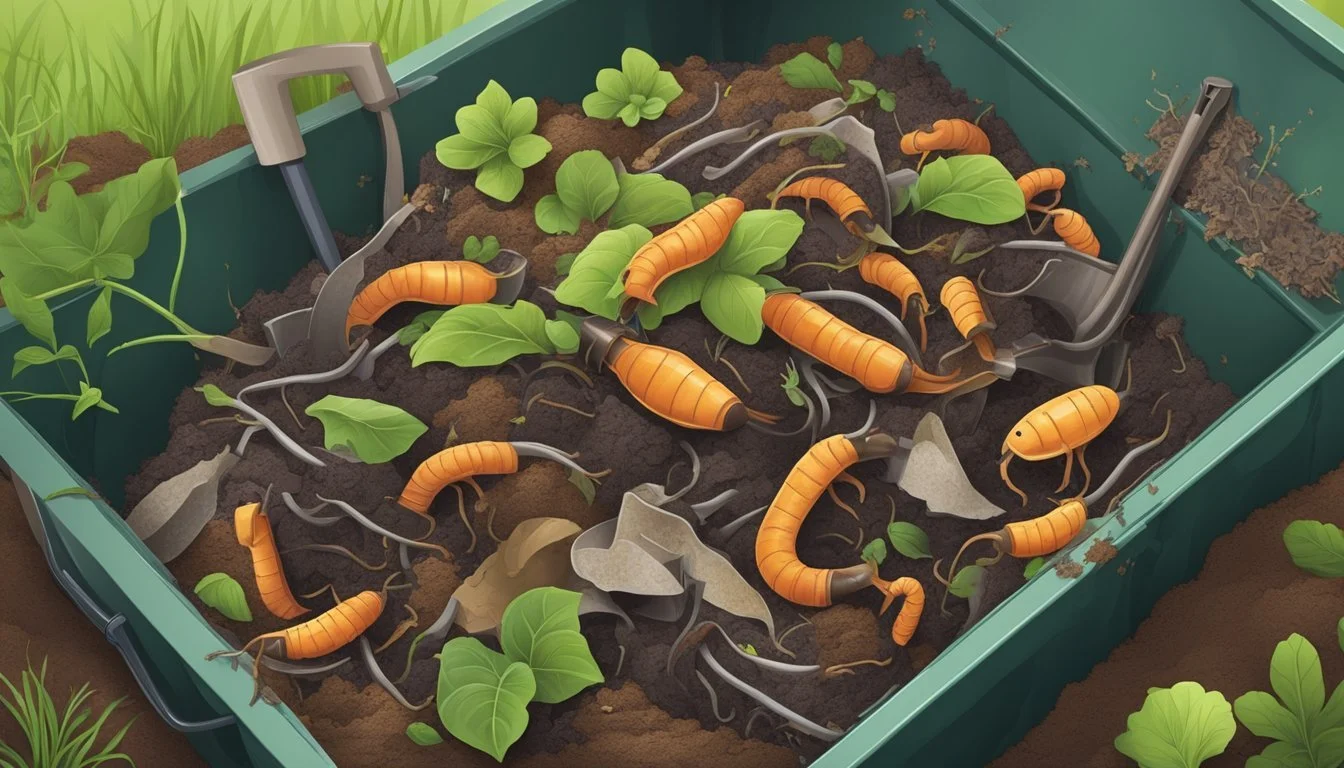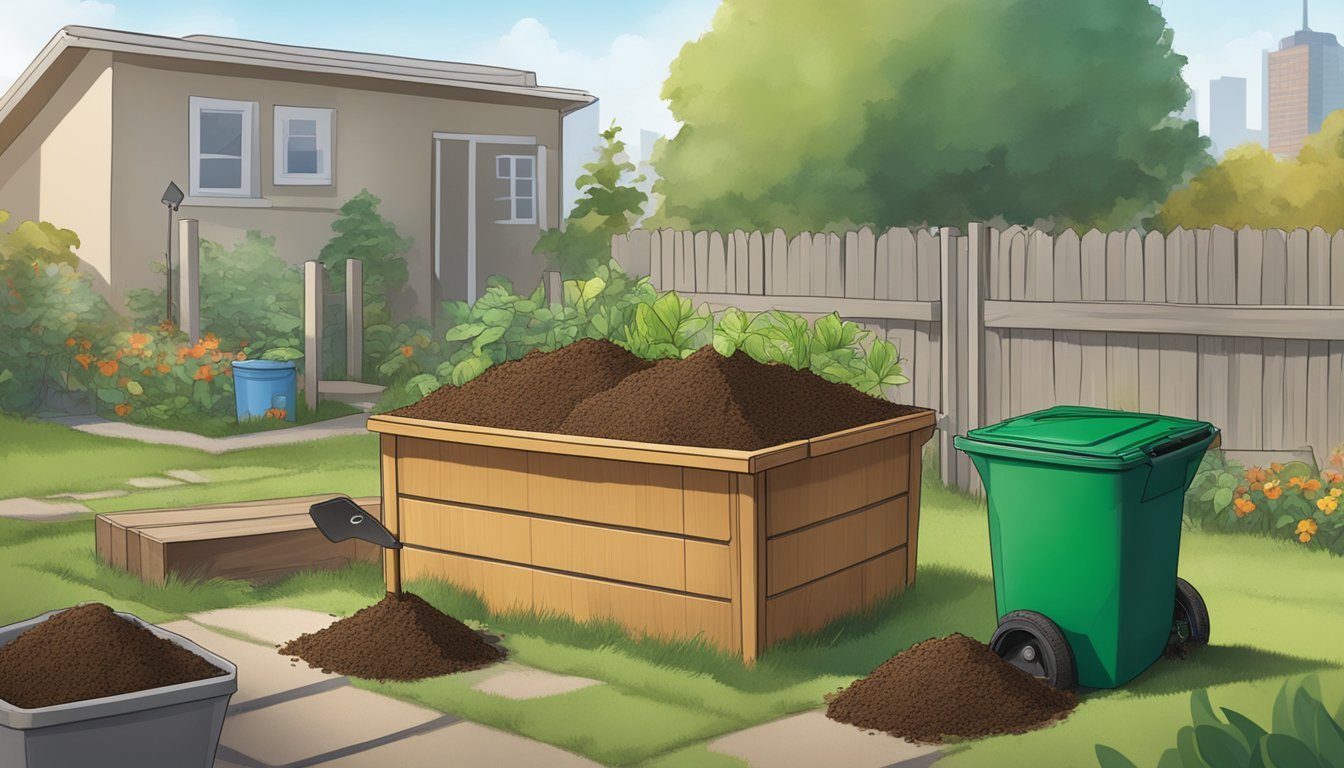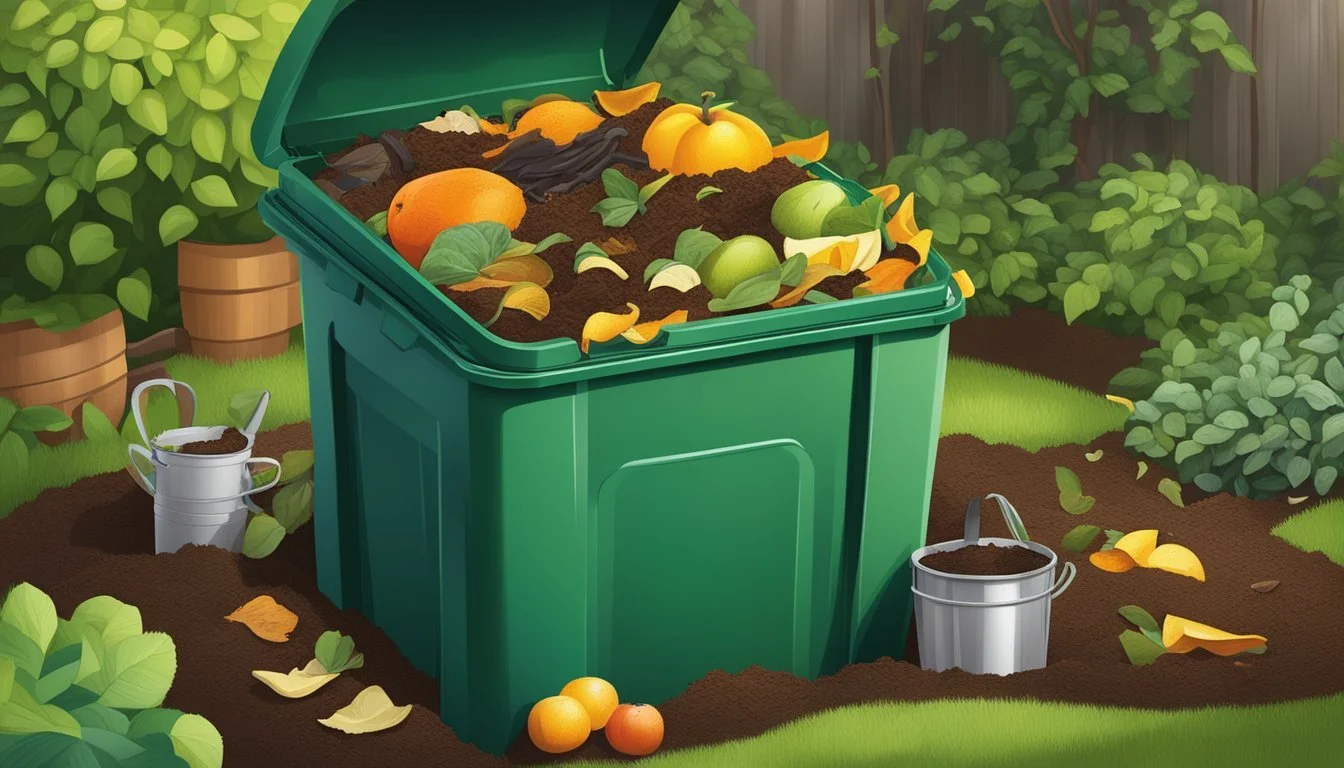Guide to Composting in South Bend, IN
Steps for Successful Soil Enrichment
Composting in South Bend, Indiana, offers an eco-friendly way to recycle organic waste and contributes to sustainable living practices. As cities across the globe aim to reduce their environmental footprint, South Bend provides its residents with resources and education to turn yard waste and certain food scraps into nutrient-rich soil amendments. Residents have access to local facilities where they can either drop off compostable materials or obtain finished compost for their gardening needs.
South Bend's composting initiative is not only a step towards environmental stewardship but also a community-building effort that encourages residents to participate in green practices. By composting, individuals help reduce the amount of waste sent to landfills and, consequently, the production of greenhouse gases. They simultaneously create a valuable product that can enhance soil quality, reducing the need for chemical fertilizers and promoting healthier plant growth.
The city supports its residents with clear guidelines and educational materials on what can be composted and how to do it effectively. For those who prefer not to compost at home, South Bend offers a centralized Organic Resources Facility where yard waste is transformed into compost and mulch. Here, residents can contribute to the cycle of sustainability by dropping off appropriate waste and picking up compost for their personal use, making composting in South Bend a practical option for enhancing the local environment.
Composting Basics
In South Bend, Indiana, understanding the essentials of composting empowers residents to positively impact their environment. Composting is a practical solution to reduce landfill waste and combat climate change.
What Is Composting?
Composting is the biological process of breaking down organic materials into a nutrient-rich soil amendment. This natural decomposition occurs thanks to the work of microorganisms, which thrive in an aerobic environment where they have access to air and water. When done correctly, composting converts materials like grass clippings, leaves, and kitchen scraps into valuable compost for gardening and landscaping.
Benefits of Composting
Engaging in composting has profound benefits both for personal gardens and the global ecosystem. It significantly cuts down the amount of waste sent to landfills and reduces greenhouse gas emissions, as organic waste in landfills decomposes anaerobically, releasing methane, a potent greenhouse gas. By composting, these materials are repurposed, enhancing soil health, conserving moisture, and helping plants resist disease—all contributing to mitigating climate change.
Getting Started
To begin composting in South Bend, residents need a strategic approach starting with the selection of a suitable location and the right compost container. These initial steps are crucial for effective composting practices.
Choosing a Location
The ideal location for a compost pile or bin is a dry, shady area near a water source. An outdoor space that avoids direct sunlight will prevent the compost from drying out too quickly, yet remains accessible for adding materials and turning the pile.
Selecting the Right Container
When it comes to containers, South Bend residents have options. Compost bins range from homemade to store-bought models designed to accommodate various scales of composting. For a backyard setup, a container that allows for a minimum of 1 cubic yard of compost is suggested to maintain sufficient heat for decomposition without taking over your outdoor space.
Composting Materials
Composting in South Bend, Indiana, relies on a careful balance of organic materials, split into "greens" for nitrogen and "browns" for carbon. Proper selection of materials ensures a successful composting process.
Greens and Browns
Greens are nitrogen-rich materials that help to heat up the compost pile and speed up the decomposition process. They include items such as:
Grass clippings: They should be added in thin layers to prevent matting.
Food waste: Fruit and vegetable scraps, but no meat or dairy products.
Coffee grounds: A great source of nitrogen and a natural worm attractant.
Browns provide carbon, which is essential for compost balance and structure. Examples of browns include:
Leaves: Dead leaves are a classic brown material and can be collected from yard waste.
Weeds: Only those that haven't gone to seed, to avoid spreading them.
Wood chips: Preferably untreated and used in moderation as they take longer to break down.
It's crucial to maintain a balance between these two types of materials, typically aiming for a ratio of three parts browns to one part greens.
Items to Avoid
When composting in South Bend, it is imperative to exclude certain items to prevent attracting pests and creating odor issues:
Meat: Can attract pests and cause unpleasant odors.
Bones: Do not break down easily in a typical backyard compost setup.
Dairy products: Can create odor problems and attract unwanted animals and insects.
Additionally, certain organic materials are best left out of the compost pile, even though they're biodegradable, to maintain the quality and safety of the compost produced. For instance, treated yard waste or weeds that have gone to seed might contain chemicals or lead to weed problems. The City of South Bend runs Organic Resources, providing additional guidelines for composting and accepting certain types of organic waste from residents.
Composting Processes
In South Bend, effective composting processes hinge on balancing organic matter, moisture, and air. Ensuring proper nitrogen content and facilitating oxygen flow are crucial for efficient decomposition.
Layering Method
The layering method is a strategic approach to building a compost pile. One begins with alternating layers of green and brown materials to provide a good mix of nitrogen-rich and carbon-rich elements. Green materials may include kitchen scraps or grass clippings, whereas brown materials are typically dry leaves or straw.
Maintaining Moisture and Aeration
For composting, the pile should maintain the moisture content of a damp sponge. Aerobic bacteria require this moisture to survive and are essential for breaking down organic material. Furthermore, aeration is needed; without adequate air flow, compost can become anaerobic and emit unpleasant odors due to slower decomposition.
Turning and Aeration
Regular turning of the compost pile encourages oxygen flow and speeds up the decomposition process. The introduction of air through turning also evenly distributes moisture and heat throughout the pile, which is vital to sustain the composting microbial activity.
Composting at Home
Composting at home is a valuable practice for South Bend residents looking to enrich their garden soils while reducing waste. South Bend offers options to turn organic waste from the yard and kitchen into nutrient-rich soil amendments through different methods of composting.
Backyard Composting
Backyard composting is an efficient way to decompose yard waste, such as grass clippings and leaves, into compost. Homeowners should find a suitable spot in their yard where they can pile organic materials. The St. Joseph County website emphasizes that for successful composting one must maintain a balance of air, water, and food for the composting microbes. By turning the compost pile regularly, they can ensure it remains aerobic, speeding up the decomposition process and preventing foul odors.
Vermicomposting
Vermicomposting is ideal for individuals who may not have large yards but still want to compost. It entails using specialized worms, typically red wigglers, to break down organic kitchen scraps. The worms consume the scraps and produce castings, which are extremely fertile and can be mixed into the soil of a garden to boost plant health. This method can be done indoors in containers and can be a more manageable option for people living in urban settings.
Grasscycling
Grasscycling is the simple process of leaving grass clippings on the lawn after mowing, where they will quickly decompose and naturally fertilize the lawn. This method reduces yard waste and is beneficial for the grass, as the clippings provide nutrients like nitrogen back into the soil. Not only does it save time and effort by eliminating the need to bag and dispose of the clippings, but it also fosters a healthier and greener lawn without the use of chemical fertilizers.
Compost Use and Maintenance
Maintaining a compost pile effectively ensures the transformation of organic waste into nutrient-rich compost, which can then serve as a natural fertilizer for gardens. Proper use and routine care are pivotal in creating high-quality compost.
When Is Compost Finished?
The composting process culminates when the material at the bottom of the pile appears dark, crumbly, and is homogenous in texture. The original organic materials should no longer be identifiable, and it should have an earthy smell. Finished compost, often taking a few months to a year to develop, should not emit a rancid odor.
To assess if compost is finished:
Smell: It should have an earthy, not unpleasant, smell.
Sight: Look for a dark, crumbly texture that resembles rich soil.
Touch: It should be cool and maintain moisture like a wrung-out sponge.
Using Compost in Your Garden
Compost is a versatile component in gardening, usable as a soil amendment or as mulch. It introduces beneficial microorganisms and nutrients, bolstering the garden's vitality.
For application in a garden:
Before planting: Mix the compost into the garden bed, aiming for a mix of roughly 5% to 10% compost to improve the soil structure.
As mulch: Spread a layer of compost around plants to enhance moisture retention and deter weeds.
For established gardens: Apply a thin layer of compost to the soil surface annually.
Incorporating compost into your yard can revive lackluster dirt, making it fertile ground for plants. The use of compost can reduce the need for chemical fertilizers, promoting a more sustainable and ecologically sound approach to gardening.
Troubleshooting
When engaging in composting in South Bend, Indiana, individuals may encounter challenges such as pests and foul odors or issues with the moisture content of their compost piles. Addressing these issues promptly ensures the composting process remains efficient and hygienic.
Managing Pests and Odors
To maintain a healthy compost system, it is imperative to achieve the right balance of green (nitrogen-rich) and brown (carbon-rich) materials. This balance deters odors, which can attract rodents and other pests. For instance, ensuring appropriate carbon-to-nitrogen ratio and maintaining sufficient airflow are critical steps one can take to avoid unpleasant smells. In the case that compost begins to emit odors, it is often due to an excess of green materials or a lack of aeration. To rectify this, one should turn the compost pile to introduce more air or add more brown materials such as dry leaves or shredded newspaper. If rodents are a problem, using a compost bin with a secure lid or fine wire mesh can prevent them from accessing the pile.
Compost Too Wet or Dry
The moisture level in a compost pile is essential for microbial activity but managing it can be challenging. Compost should feel like a wrung-out sponge; if it is too wet, it lacks sufficient air to support the composting process, leading to anaerobic conditions and potential odor issues. Sprucing up the pile with dry, brown materials can help absorb excess water. Conversely, if the compost is too dry, moisture won't be adequate for microorganisms to thrive. To correct this, one can sprinkle water onto the pile during dry periods, ensuring even distribution without over-saturating it.
Community and City Initiatives
The city of South Bend, Indiana, demonstrates a strong commitment to sustainable waste management through various city-sponsored composting programs and support for community gardens. These efforts not only foster local engagement but also contribute to the overarching goals of the city's solid waste management district.
City-Sponsored Programs
South Bend operates an Organic Resources program, where residents and businesses can take yard waste such as grass clippings, leaves, weeds, and branches to be transformed into compost and mulch. This initiative is a practical application of recycling organic materials, which in turn, reduces the amount of waste sent to landfills. Organic Resources maintains a facility at 4340 Trade Drive, providing easy access for city residents to contribute to and benefit from the program.
Community Gardens
Community gardens in South Bend serve as a vessel for promoting composting on a local level. Not only do they provide fresh produce and a place for community members to connect, but they also use compost to enhance soil fertility. Engagement in these gardens encourages residents to learn about and participate in composting, aligning with the goals of the St. Joseph County Solid Waste Management District. Composting education efforts within these gardens often result in wider adoption of sustainable practices among the community.
Environmental Impact
Composting in South Bend significantly alters waste management dynamics, directly influencing methane emissions and the volume of greenhouse gases released into the atmosphere.
Reducing Kitchen and Yard Waste
South Bend's approach to composting transforms the way the city deals with kitchen and yard waste. Greens, such as grass clippings and vegetable scraps, and browns, like leaves and twigs, constitute the essential components of composting. By diverting these materials from landfills to composting facilities, South Bend reduces the accumulation of wasted food and other organic waste. The Organic Resources facility in South Bend informs citizens on how to properly balance greens and browns to create nutrient-rich compost for gardens and landscapes.
Impact on Methane and Greenhouse Gases
Composting has a twofold effect on climate change. It prevents the development of methane, a potent greenhouse gas, which is generated when organic waste decomposes anaerobically (without oxygen) in landfills. The microbes in a well-maintained compost pile decompose food scraps and other organic materials aerobically, with oxygen, thus emitting considerably less methane. This process not only lessens the burden on landfills but also contributes to the sequestration of carbon in the soil. Through these practices, South Bend plays a part in the broader effort to mitigate climate change. Community environmental health resources provide further details on how composting aids in the reduction of harmful greenhouse gas emissions.
St. Joseph County Resources
St. Joseph County, Indiana, offers a variety of resources for residents to support composting and recycling organic waste materials.
Drop-off Locations and Hours
St. Joseph County provides accessible drop-off locations for residents to bring their compostable materials. The Organic Resources facility, pivotal to the county's recycling efforts, is situated at 4340 Trade Drive in South Bend. Hours of operation change with the seasons:
February 5 through March 29: Monday through Friday, 8 a.m. to 4 p.m. (Loading until 3:45 p.m.)
April 1 through December 31: Monday through Friday, 8 a.m. to 5 p.m. (Loading until 4:45 p.m.)
This accommodates the increased yard activity during warmer months.
Materials Accepted for Drop-off
The county encourages residents to contribute to the composting process by accepting a variety of yard waste materials. Below is a list of acceptable items:
Brush, branches, and logs: Up to a specified size limit.
Grass clippings
Leaves
This helps to facilitate proper solid waste management within the county and promotes environmental sustainability. It is important that residents adhere to guidelines regarding the types and sizes of materials accepted to ensure efficient processing and composting.










